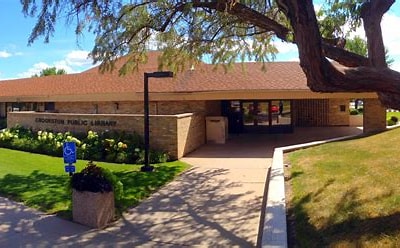The Polk County Commissioners on Tuesday voted not to approve an Interim Use Permit for an asphalt batch plant and contractor yard at the intersection of U.S. Highway 2 and State Highway 220 east of East Grand Forks. The board acted on a recommendation not to approve the permit for R.J. Zavoral & Sons as was recommended by the Polk County Planning Commission and Polk County Zoning Administration.
Time is the key factor differing an interim use permit (IUP) from the more common conditional use permits (CUP) issued by the county explained Environmental Services Assistant Director Jake Snyder. “The main difference between interim use and conditional use is, an interim use permit is for a specific period of time,” said Snyder. “Interim is for interim usage for the time the applicant has submitted for. Conditional uses are site uses that you can use the site in that manner for the time – forever really – as long as you meet the conditions laid out within the permitting process. Meet all the conditions as far as existing land uses around it fit in harmony with it, all the things that go in the zoning ordinance. IUPs and CUPs are very similar in nature, just that conditional uses can be sold, can be site uses as long as conditions are met. Interim use permits are for a subject of time. They are seen as more temporary uses. They aren’t transferrable. They are only for the applicant that submits an application. That’s why they are interim in nature.”
The recommendation noted the potential for beans at Thompsons USA bean processing plant to be contaminated by odor potentially costing the company millions of dollars in less than a week was the most alarming concern for staff and the Planning Commission. “It’s laid out in our ordinance as far as how a site use could have potential impacts for existing land uses,” said Snyder. “That was a big factor. We had received several comments, some of those comments were from residential properties and one was from a business property located near the site. They had a concern with product and the sell-ability of those products if this was in operation. The impacts that a site use could have always weigh in on the process and decision-making because of the standards and ordinance that specify – the Zoning Administrator, the Planning Commission, the Board of Adjust, shall consider whether a use fits in the existing land uses around it, doesn’t create potential nuisances, and lists those out quite specifically.”
More than a dozen comments were submitted during the process of considering the permit by affected parties, which Snyder said is how the system is designed. “The whole point of the process; and having rules and regulations is to get people involved in decision-making on the county level,” said Snyder. “We have no way of doing that other than the notices we put out in the mail. Notices go out to affected parties. They have a chance to comment on how this could potentially impact their current land uses. That takes weight in the decision-making process as it should.”
Commissioner Gerald Jacobson said while he is pro-business, and it’s a tough call, that with the surrounding people and the bean plant he had to make a motion to deny. Snyder said the final decision always comes down to the County Commissioners. “Always the decision-maker is the County Commissioners,” said Snyder. “All the factors were weighed in the whole process. Nothing was predetermined. Everything is based on everything we get as far as an application. We factor in all the comments that are received; letters that are written, and also do the public hearing portion. That’s all in the record of the decision-making process.”




